- Mulch Your Conifers
- Prune Dead or Damaged Branches
- Wrap Your Conifers
- Water Your Conifers Properly
- Choose Native Conifers
- Create Windbreaks for Your Conifers
- Avoid Using Salt on Pathways
- Monitor and Control Pest Infestations
- 1. Regular Inspections
- 2. Identify the Pest
- 3. Use Beneficial Insects
- 4. Prune Infested Branches
- 5. Apply Organic Pest Control Solutions
- 6. Maintain Tree Health
- Questions and Answers:
- How can I protect my conifers from winter burns?
- What is the best way to protect conifers from drought during winter?
- Can I prevent snow accumulation on my conifers?
- How do I know if my conifers are suffering from winter burn?
- What types of conifers are more susceptible to winter burn?
- How often should I water my conifers during winter?
- Can I remove snow from conifer branches?
- Videos: Protecting Shrubs in Winter
Conifers are a beautiful addition to any landscape, providing year-round greenery and texture. However, the harsh winter conditions can pose a threat to the health and appearance of these trees. In order to keep your conifers thriving during the winter months, it’s important to take steps to protect them from burns, drought, and snow accumulation.
Burns
Winter sun combined with cold temperatures can cause burns on conifer needles. The intense sunlight reflects off the snow and magnifies the exposure of the needles to harmful UV rays. This can result in brown or yellow patches on the needles, which can be unsightly and weaken the tree.
One effective way to protect conifers from burns is to erect a burlap screen or barrier on the sunny side of the tree. This will filter the sunlight and reduce the intensity of the UV rays reaching the needles. It’s best to install the burlap before the first snowfall to provide maximum protection.
Drought
In many regions, winter can bring drought conditions that can be just as damaging to conifers as summer drought. The freezing temperatures can cause the soil to dry out, leaving the tree without adequate moisture. This can lead to desiccation, or drying out, of the needles and branches.
To prevent drought damage, it’s important to water conifers deeply before the ground freezes. This will help to replenish the moisture reserves in the soil and provide the tree with the necessary hydration to withstand the winter months. Mulching around the base of the tree can also help retain soil moisture.
Snow Accumulation
Heavy snow accumulation on conifers can cause branches to bend or break, leading to permanent damage. Additionally, the weight of the snow can compress the needles, reducing their ability to absorb sunlight and perform photosynthesis.
To protect conifers from snow accumulation, it’s important to gently brush off any excess snow from the branches using a broom or brush. Be careful not to shake the branches vigorously, as this can cause them to break. It’s also a good idea to tie up the branches of conifers that are prone to bending, to help distribute the weight of the snow more evenly.
By taking these steps to protect conifers from burns, drought, and snow accumulation, you can ensure that your trees will remain healthy and vibrant throughout the winter season. Remember to monitor the weather conditions and adjust your protection strategies as needed.
Mulch Your Conifers
One of the best ways to protect your conifers during the winter is to mulch around their base. Mulching provides insulation for the root system, preventing freezing and helping to regulate soil temperature. Here are some tips for mulching your conifers:
- Choose the right mulch: Use organic mulch such as bark chips, straw, or leaves. Avoid using plastic or synthetic mulch, as these can prevent water from reaching the roots.
- Apply an even layer: Spread a layer of mulch around the base of the conifer, extending it out to the drip line. Make sure the mulch is about 2-4 inches deep.
- Avoid piling mulch against the trunk: Leave a gap of a few inches between the mulch and the trunk to prevent moisture buildup and potential rot.
- Replenish mulch regularly: Mulch can break down over time, so make sure to check the depth and add more mulch as needed throughout the winter.
Overall, mulching is a simple and effective way to protect your conifers from winter burns, drought, and snow accumulation. It helps to preserve moisture, regulate temperature, and provide insulation for the root system. By following these tips, you can ensure that your conifers stay healthy and thrive throughout the winter months.
Prune Dead or Damaged Branches
One important task for protecting conifers in winter is pruning dead or damaged branches. Pruning helps maintain the health and structure of the trees and prevents further damage. Here are some tips for pruning conifers:
- Inspect the tree: Before pruning, inspect the conifer tree for any dead or damaged branches. These branches may appear brown or broken, and they should be removed.
- Choose the right tools: Use sharp and clean pruning shears or saws to make clean cuts without damaging the tree further.
- Prune during dormancy: The best time to prune conifers is during their dormancy period, which is typically in late winter or early spring. Pruning during this time promotes new growth and minimizes stress on the tree.
- Take care of the branch collar: When pruning, make sure to cut just outside the branch collar, which is the swollen area where the branch meets the trunk. Cutting too close to the trunk may cause damage and inhibit the tree’s ability to heal.
- Remove branches in sections: If you need to remove large or heavy branches, it’s best to do it in sections to prevent tearing or causing further damage to the tree.
- Dispose of pruned branches: Cut branches into smaller pieces and dispose of them appropriately. Avoid leaving them around the base of the tree, as they can attract pests and promote diseases.
Regular pruning of dead or damaged branches helps conifers maintain their overall health and appearance. It also reduces the risk of branches breaking and causing injury or property damage during winter storms.
Wrap Your Conifers
Wrapping your conifers is an effective way to protect them from winter burns, drought, and excessive snow accumulation. Here are some tips on how to properly wrap your conifers:
- Choose the right material: Use burlap or horticultural fabric to wrap your conifers. These materials are breathable, allowing air and moisture to reach the plants while still providing protection.
- Wrap from bottom to top: Start wrapping your conifers from the bottom and work your way up. This will ensure that the entire plant is covered and protected.
- Secure the wrapping: Use twine or rope to secure the wrapping around the conifers. Make sure it is tight enough to hold the material in place, but not too tight to cause damage.
- Leave room for ventilation: When wrapping your conifers, make sure to leave some room for air to circulate. This will prevent moisture buildup and reduce the risk of fungal diseases.
- Monitor regularly: Check your wrapped conifers regularly throughout the winter. Inspect the wrapping for any signs of damage or loosening. Adjust or replace the wrapping as needed.
Wrapping your conifers can provide the extra protection they need during the harsh winter months. Follow these tips to keep your conifers safe and healthy until spring arrives.
Water Your Conifers Properly
Proper watering is essential for the health and survival of your conifers during the winter months. While conifers are more drought-tolerant than other trees, it is still important to provide them with adequate moisture. Here are some tips to help you water your conifers properly:
- Water deeply: Instead of giving your conifers frequent shallow waterings, water them deeply and less frequently. This encourages the roots to grow deeper into the soil, making the tree more resilient to drought.
- Water before freezes: Before the ground freezes, ensure that your conifers are well-watered. This will help to prevent the tree from becoming dehydrated and suffering from winter burn.
- Use a soaker hose or drip irrigation: Consider using a soaker hose or drip irrigation system to water your conifers. These methods deliver water directly to the roots, reducing evaporation and ensuring that the water goes where it is needed most.
- Monitor soil moisture: Regularly check the moisture level of the soil around your conifers. Stick your finger a few inches into the ground, and if it feels dry, it’s time to water. If it feels moist, wait a few more days before watering again.
- Avoid overwatering: While it is important to provide adequate moisture, overwatering can be detrimental to conifers. Excess water can lead to root rot and other diseases. Be cautious not to saturate the soil, particularly in areas with poor drainage.
- Protect from snow accumulation: It’s important to also protect your conifers from excessive snow accumulation. Brush off heavy snow from the branches to prevent breakage or damage. The weight of the snow can also block sunlight, which is essential for the photosynthesis process.
By following these watering tips, you can ensure that your conifers stay healthy and vibrant throughout the winter months.
Choose Native Conifers
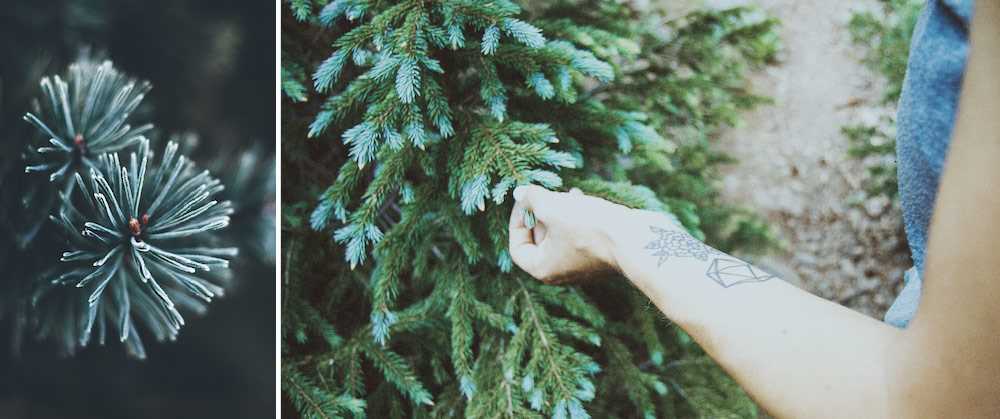
When selecting conifers for your garden or landscape, it’s important to choose species that are native to your region. Native conifers are well adapted to the climate, soil conditions, and pests in your area, making them more resilient and less susceptible to winter damage.
Native conifers have evolved to withstand the cold temperatures and harsh weather conditions of your specific region. They have developed natural defenses against winter burns, drought, and heavy snow accumulation, which can cause damage to non-native species.
Furthermore, native conifers are more likely to attract native birds and insects, which can help control pests and pollinate other plants in your garden. They also provide food and shelter for local wildlife during the winter months.
When choosing native conifers, consider factors such as their size, shape, growth rate, and suitability to your specific landscape. Research local nurseries or consult with a horticulturist or arborist who specializes in native plants to ensure you select the right species for your needs.
Incorporating native conifers into your garden not only adds beauty and diversity to your landscape but also helps support the local ecosystem and promotes a healthy and sustainable environment.
Create Windbreaks for Your Conifers
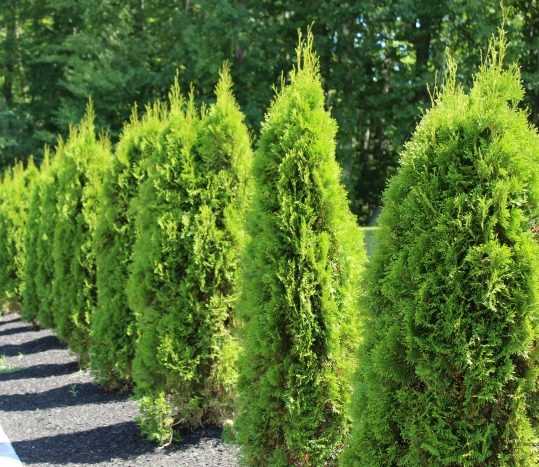
If you live in an area with strong winds, it’s important to create windbreaks to protect your conifers from being damaged. Wind can cause desiccation, which is the drying out and damage to the foliage of conifers. Here are some tips on creating effective windbreaks:
- Select the right location: Choose a location for your windbreak that is perpendicular to the prevailing wind direction. This will ensure that the wind is deflected away from your conifers.
- Choose the right materials: Use solid materials such as wooden fencing or brick walls to create a windbreak. These materials will help to block the wind effectively.
- Plant dense vegetation: In addition to solid materials, you can also plant dense vegetation such as evergreen shrubs or trees to create a living windbreak. These plants will act as a barrier and help to deflect and slow down the wind.
- Create a staggered pattern: When planting trees or shrubs as a windbreak, consider creating a staggered pattern rather than a straight line. This will help to disrupt the wind flow and make your windbreak more effective.
- Maintain your windbreak: Regularly inspect and maintain your windbreak to ensure that it remains in good condition. Trim any overgrown vegetation and repair any damaged or weak areas.
By creating windbreaks for your conifers, you can help protect them from the damaging effects of strong winds. Follow these tips to ensure the health and longevity of your conifers throughout the winter months.
Avoid Using Salt on Pathways
Salt is a common method used to melt ice and snow on pathways during winter. However, it can be harmful to conifers and other plants.
When salt is applied to pathways, it can seep into the soil and be absorbed by the roots of nearby plants. This can lead to dehydration and salt burns on the foliage and needles of conifers.
Instead of using salt, consider using alternative methods to melt ice and snow on pathways. Here are a few options:
- Shoveling: Clearing the pathway of snow and ice manually can be an effective and safe option.
- Sand or gravel: Spreading sand or gravel on the pathway can provide traction and help prevent slips, without damaging the conifers.
- De-icing products: There are environmentally friendly de-icing products available that are less harmful to plants. Look for products that are labeled as safe for vegetation.
If you do need to use salt on pathways, try to minimize its use and avoid applying it directly on or near conifers. Instead, focus on applying it to high-traffic areas where it is most needed.
Protecting conifers in winter involves taking precautions to prevent burns, drought, and snow accumulation. By avoiding the use of salt on pathways, you can help ensure the health and vitality of your conifers throughout the winter season.
Monitor and Control Pest Infestations
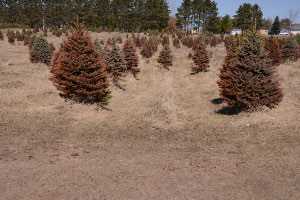
Pest infestations can have a detrimental impact on conifers, weakening them and inhibiting growth. It is important to monitor for signs of pest activity and take appropriate control measures to prevent further damage. Here are some steps you can take to monitor and control pest infestations:
1. Regular Inspections
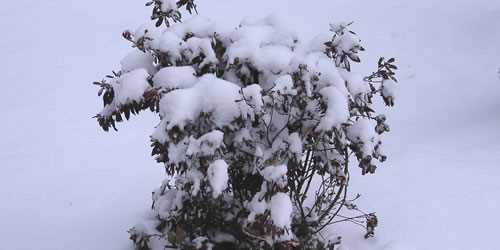
Regularly inspect your conifers for any signs of pest activity, such as chewed foliage, holes in the bark, or the presence of pests themselves. Pay close attention to the foliage, branches, and trunk.
2. Identify the Pest
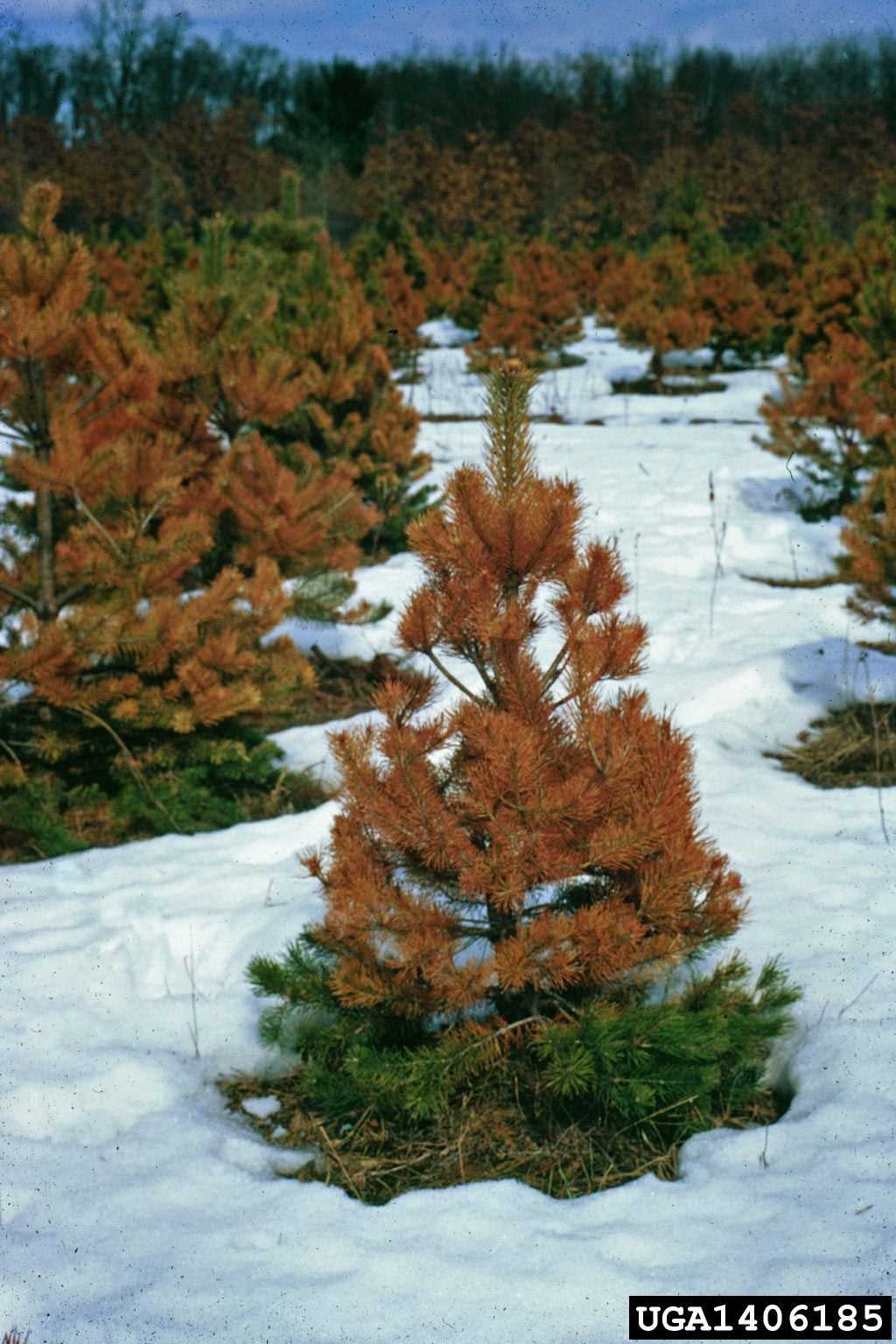
If you notice signs of pest activity, try to identify the specific pest causing the damage. Different pests require different control methods, so it is important to correctly identify the pest before taking any control measures.
3. Use Beneficial Insects
Consider introducing beneficial insects that prey on the specific pest causing the infestation. For example, ladybugs and lacewings feed on aphids, which are common pests of conifers. These natural predators can help control pest populations.
4. Prune Infested Branches
If you spot branches affected by pests, promptly prune and dispose of them properly. This can help prevent the infestation from spreading to other parts of the tree.
5. Apply Organic Pest Control Solutions
If the pest infestation is severe, you may need to use organic pest control solutions. These can include insecticidal soaps, neem oil, or horticultural oils, which can help control pests while minimizing harm to beneficial insects and the environment.
6. Maintain Tree Health
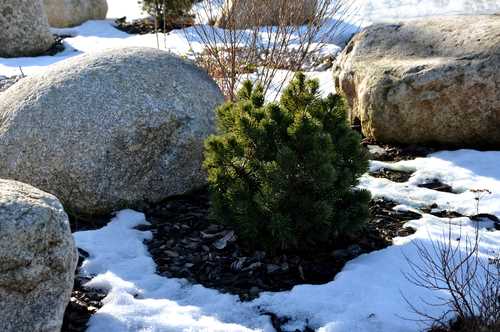
Healthy trees are more resistant to pest infestations. Be sure to provide adequate water, nutrients, and sunlight to your conifers. Regularly fertilize as needed and address any other issues that may be affecting the tree’s health.
By monitoring for pest infestations and taking appropriate control measures, you can help protect your conifers from damage and promote their overall health and vitality.
Questions and Answers:
How can I protect my conifers from winter burns?
Winter burns on conifers can be prevented by creating a windbreak using burlap or a similar material. Wrapping the trunks of young trees with burlap can also help protect them from harsh winter winds.
What is the best way to protect conifers from drought during winter?
One of the best ways to protect conifers from drought during winter is to water them deeply before the ground freezes. Applying mulch around the trees can also help conserve moisture and prevent drought stress.
Can I prevent snow accumulation on my conifers?
Yes, you can prevent snow accumulation on your conifers by gently shaking the branches after each snowfall. This will help prevent branches from breaking under the weight of heavy snow.
How do I know if my conifers are suffering from winter burn?
Symptoms of winter burn on conifers include brown or reddish discoloration of needles, especially on the side facing prevailing winds. If the needles are still flexible and not brittle, there is a chance for recovery.
What types of conifers are more susceptible to winter burn?
Conifers with thin or needle-like leaves, such as pine, spruce, and fir trees, are more susceptible to winter burn. Broadleaf conifers, like yews and arborvitae, are generally more resistant.
How often should I water my conifers during winter?
The frequency of watering conifers during winter will depend on the weather conditions. As a general rule, water deeply once a week if there is no snow cover and the ground is not frozen. Adjust watering schedule based on moisture levels.
Can I remove snow from conifer branches?
It is best not to remove snow from conifer branches by shaking them or using tools. This can cause branches to break or become damaged. Instead, gently brush off any loose snow with your hand or a broom.







